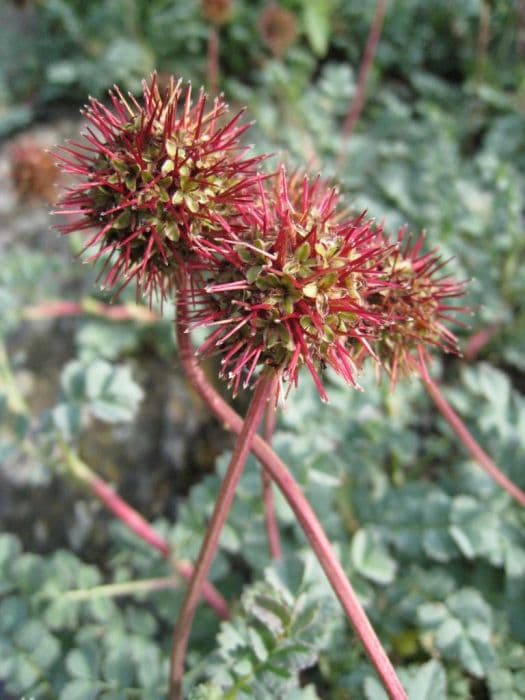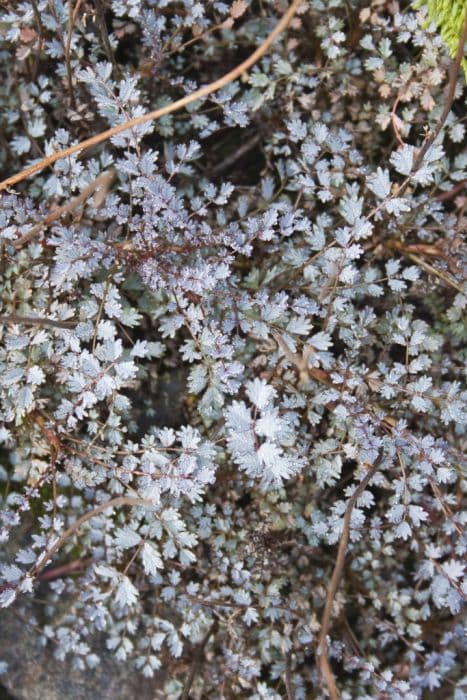Shrubby cinquefoil 'Katherine Dykes' Potentilla fruticosa 'Katherine Dykes'

ABOUT
'Katherine Dykes' is an upright deciduous shrub to 1.2m tall, with small, pinnate leaves and canary-yellow flowers 2cm wide from late spring to mid autumn
About this plant
 Names
NamesSynonyms
Shrubby Cinquefoil, Golden Hardhack, Potentilla, Bush Cinquefoil, Tundra Rose, Widdy.
Common names
Potentilla fruticosa 'Katherine Dykes'.
 Characteristics
CharacteristicsLife cycle
Perennials
Foliage type
Deciduous
Color of leaves
Green
Flower color
Yellow
Height
2-3 feet [60-90 cm]
Spread
2-4 feet [60-120 cm]
Plant type
Shrub
Hardiness zones
2-8
Native area
Northern Hemisphere
Benefits
 General Benefits
General Benefits- Aesthetic appeal: Adds beauty to landscapes with its delicate yellow flowers and bushy appearance.
- Long blooming period: Offers a long season of color, typically from late spring to fall.
- Wildlife attraction: Flowers provide nectar for pollinators like bees and butterflies.
- Drought tolerance: Once established, it is drought-resistant, reducing the need for frequent watering.
- Low maintenance: Requires minimal pruning and care once established.
- Hardiness: Survives in a wide range of temperatures, making it suitable for various climates.
- Soil adaptability: Grows in a variety of soil types, although it prefers well-drained conditions.
- Disease and pest resistance: Exhibits resistance to many common garden pests and diseases.
- Erosion control: Its root system can help stabilize soil and prevent erosion.
 Medical Properties
Medical PropertiesThis plant is not used for medical purposes.
 Air-purifying Qualities
Air-purifying QualitiesThis plant is not specifically known for air purifying qualities.
 Other Uses
Other Uses- Shrub Cinquefoil is often used in bonsai due to its small leaves and shrubby habit, allowing for artistic shaping and cultivation in miniature form.
- Its dense growth habit makes Shrub Cinquefoil an excellent choice for erosion control on slopes or in areas prone to soil degradation.
- The plant can be used in dye-making, with different parts producing varying colors, such as tans or yellows, depending on the mordant used.
- Shrub Cinquefoil is suitable for creating wildlife gardens as it attracts a variety of pollinators, including bees and butterflies.
- Its woody stems can be used in small-scale rustic crafts, such as the creation of miniature fences or decorative garden structures.
- The plant is used in traditional willow weaving to add variety in texture and color in baskets and other woven goods.
- Shrub Cinquefoil can be planted in parking lot islands due to its tolerance of poor soils and its ability to survive with minimal care in harsh conditions.
- The plant's fibrous root system can be utilized in phytoremediation to help stabilize areas contaminated with hazardous substances.
- It can serve as a living mulch, suppressing weeds and conserving soil moisture when planted densely in garden beds or orchards.
- Shrub Cinquefoil's resistant nature makes it a good candidate for xeriscaping, the practice of designing landscapes to reduce or eliminate the need for irrigation.
Interesting Facts
 Feng Shui
Feng ShuiThe Shrubby Cinquefoil is not used in Feng Shui practice.
 Zodiac Sign Compitability
Zodiac Sign CompitabilityThe Shrubby Cinquefoil is not used in astrology practice.
 Plant Symbolism
Plant Symbolism- Endurance and Resilience: As a hardy shrub that can withstand challenging conditions, Potentilla fruticosa 'Katherine Dykes', commonly known as Shrubby Cinquefoil, often symbolizes the ability to endure and thrive in adversity.
- Hope and Optimism: The bright yellow flowers of the Shrubby Cinquefoil are reminiscent of the sun and can represent hope, cheerfulness, and a positive outlook on life.
- Protection: In folklore, Potentilla was sometimes associated with protection due to the belief that its five-petaled flowers could ward off evil.
 Water
WaterShrubby Cinquefoil should be watered regularly to maintain moist, but not waterlogged, soil. Generally, you should give the plant about 1 inch of water per week, either from rainfall or manual watering. Make sure to water the plant at the base to avoid wetting the foliage, which can lead to fungal diseases. During hot, dry periods, you may need to water the plant twice a week, using about 1 to 1.5 gallons each time, depending on the size of the plant and soil conditions. In the winter, reduce watering as the plant will require less moisture due to dormancy.
 Light
LightShrubby Cinquefoil thrives in full sun to partial shade. The ideal spot for this plant is an area where it can receive at least 6 hours of direct sunlight each day. Too little light can result in fewer flowers and a leggy growth habit. It can tolerate some shade, especially in the afternoon, but it performs best when it is exposed to ample sunlight during the morning and early afternoon.
 Temperature
TemperatureShrubby Cinquefoil is hardy and can withstand a wide range of temperatures. It can survive in temperatures as low as -30 degrees Fahrenheit and as high as 90 degrees Fahrenheit. However, the ideal temperature range for this plant is between 60 to 75 degrees Fahrenheit. As it is resistant to cold, it can be grown in areas with harsh winters without requiring special protection.
 Pruning
PruningShrubby Cinquefoil should be pruned to maintain shape and encourage bushier growth. Pruning should occur in late winter or early spring before new growth starts. Remove any dead or damaged branches and thin out the plant to allow light and air circulation which promotes healthy growth. Pruning can also stimulate new flower production. Typically, shrubby cinquefoil is pruned annually, but it can tolerate more frequent shaping if desired.
 Cleaning
CleaningNot needed
 Soil
SoilThe best soil mix for the shrubby cinquefoil (Potentilla fruticosa) 'Katherine Dykes' is well-draining, loamy soil, with added organic matter like peat or compost to retain moisture without becoming waterlogged. The soil pH should range between 6.0 and 7.5, which is slightly acidic to neutral. Mulching can help maintain soil moisture and temperature, benefiting overall plant health.
 Repotting
RepottingShrubby cinquefoil (Potentilla fruticosa) 'Katherine Dykes' doesn't often require repotting as it is generally grown as an outdoor shrub. If grown in containers, however, it should be repotted every 2-3 years to refresh the soil and provide room for growth.
 Humidity & Misting
Humidity & MistingShrubby cinquefoil (Potentilla fruticosa) 'Katherine Dykes' tolerates a wide range of humidity levels and is typically adaptable to the ambient humidity found in outdoor environments.
 Suitable locations
Suitable locationsIndoor
Provide bright light, ensure good air circulation.
Outdoor
Plant in well-draining soil, full sun to partial shade.
Hardiness zone
2-7 USDA
 Life cycle
Life cycleThe Potentilla fruticosa 'Katherine Dykes', commonly known as Shrubby Cinquefoil, begins its life as a seed which germinates in spring after experiencing cold stratification. Seedlings emerge and develop into juvenile plants, establishing a root system and producing characteristic compound leaves. In maturity, the shrubby perennial produces yellow flowers from late spring through summer which are pollinated by insects, leading to the formation of inedible fruit that houses seeds for propagation. After the flowering season, the plant enters senescence in fall, with leaves turning yellow or red before dropping. The plant overwinters with woody stems, becoming dormant in response to colder temperatures and reduced daylight. Successful individuals of Shrubby Cinquefoil can live and continue this growth cycle for several years, often up to 20 years or more.
 Propogation
PropogationPropogation time
Early Spring
The Potentilla fruticosa 'Katherine Dykes', commonly known as Shrubby Cinquefoil, can be predominantly propagated through softwood cuttings. This method is popular due to its simplicity and effectiveness. The procedure involves taking cuttings from new growth in late spring or early summer when the shoots are still tender and have not yet turned woody. The cuttings, typically 4 to 6 inches (about 10 to 15 centimeters) long, should have a few leaves at the top and all their lower leaves removed. These are then dipped in rooting hormone to encourage root development and planted in a well-draining soil mix. The container with the cuttings should be kept moist and in a warm environment with indirect sunlight. Roots generally develop within a few weeks, after which the new plants can be gradually acclimated to outdoor conditions.









